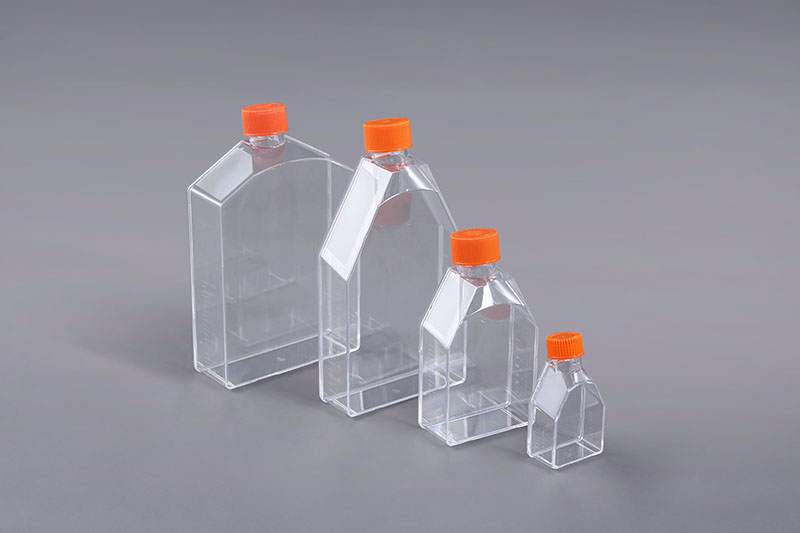Cell culture flasks have straight neck, torticollis, angle neck, triangle, rectangle, etc. according to different shapes. The specifications include 25ml, 75ml, 175ml, and 250ml. Smaller sizes are mostly used for cell passaging, preservation of cells, and provision of cells for experiments, etc. use.
After the cells grow into a dense monolayer in the cell culture flask, they are basically saturated. In order to enable the cells to continue to grow and increase the number of cells, they must be subcultured (re-cultured). Subculture is also a way to preserve cell species. At the same time, it is a necessary process for various experiments using cultured cells. Suspended cells can be separated directly, while adherent cells need to be digested before they can be separated. The specific steps are as follows:
1. Discard the original culture medium in the cell culture flask full of cells.
2. Add 0.5-1ml 0.25% pancreatin solution, so that the cells at the bottom of the bottle are immersed in the solution.
3. Put a rubber stopper on the bottle and place it under an inverted microscope to observe the cells. With the passage of time, the original adherent cells gradually tended to be round, and the pancreatin was discarded when the cells had not yet floated, and 10ml of culture medium was added to terminate the digestion. Observation of digestion can also be done with the naked eye. When the bottom of the bottle is seen white and fine pinholes appear, the digestion can be terminated. Generally, the digestion time at room temperature is about 1-3 minutes.
4. Use a pipette to blow the adherent cells into a suspension, divide them into two to three bottles, plug the culture solution with a rubber stopper, and place it at 37°C to continue culturing. Observe the adherent growth the next day.
The above is the application of cell culture flasks in cell passaging. The preparation method of digestion solution is as follows: Weigh 0.25g trypsin (activity 1:250), add 100ml Ca2+, Mg2+-free Hank’s solution to dissolve, filter Sterilize by filtration, store at 4°C, and return to temperature at 37°C before use. EDTA can also be added to the pancreatin solution to make the final concentration reach 0.02%.
The FAI climbed 5.9 percent year-on-year in the first 11 months of 2018, quickening from the 5.7-percent growth in Jan-Oct, the National Bureau of Statistics (NBS) said Friday in an online statement.
The key indicator of investment, dubbed a major growth driver, hit the bottom in August and has since started to rebound steadily.
In the face of emerging economic challenges home and abroad, China has stepped up efforts to stabilize investment, in particular rolling out measures to motivate private investors and channel funds into infrastructure.
Friday's data showed private investment, accounting for more than 60 percent of the total FAI, expanded by a brisk 8.7 percent.
NBS spokesperson Mao Shengyong said funds into weak economic links registered rapid increases as investment in environmental protection and agriculture jumped 42 percent and 12.5 percent respectively, much faster than the average.
In breakdown, investment in high-tech and equipment manufacturing remained vigorous with 16.1-percent and 11.6-percent increases respectively in the first 11 months. Infrastructure investment gained 3.7 percent, staying flat. Investment in property development rose 9.7 percent, also unchanged.
 English
English



















































